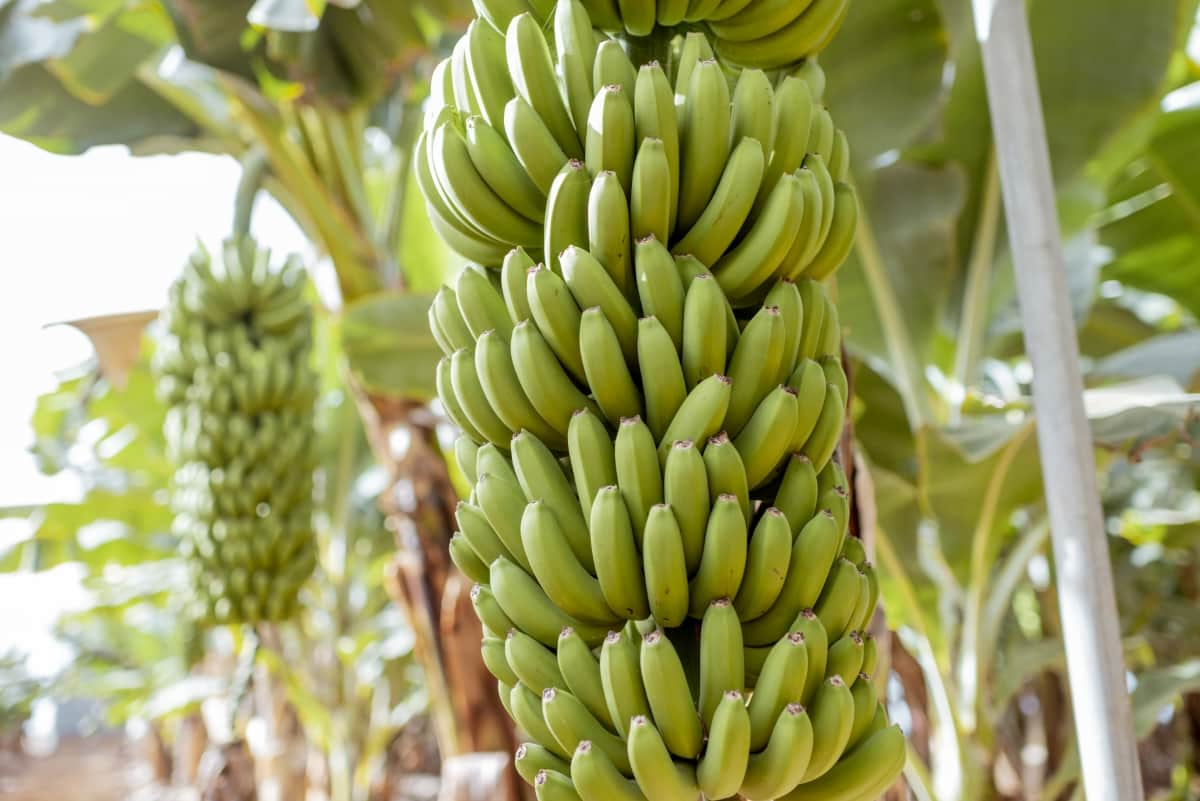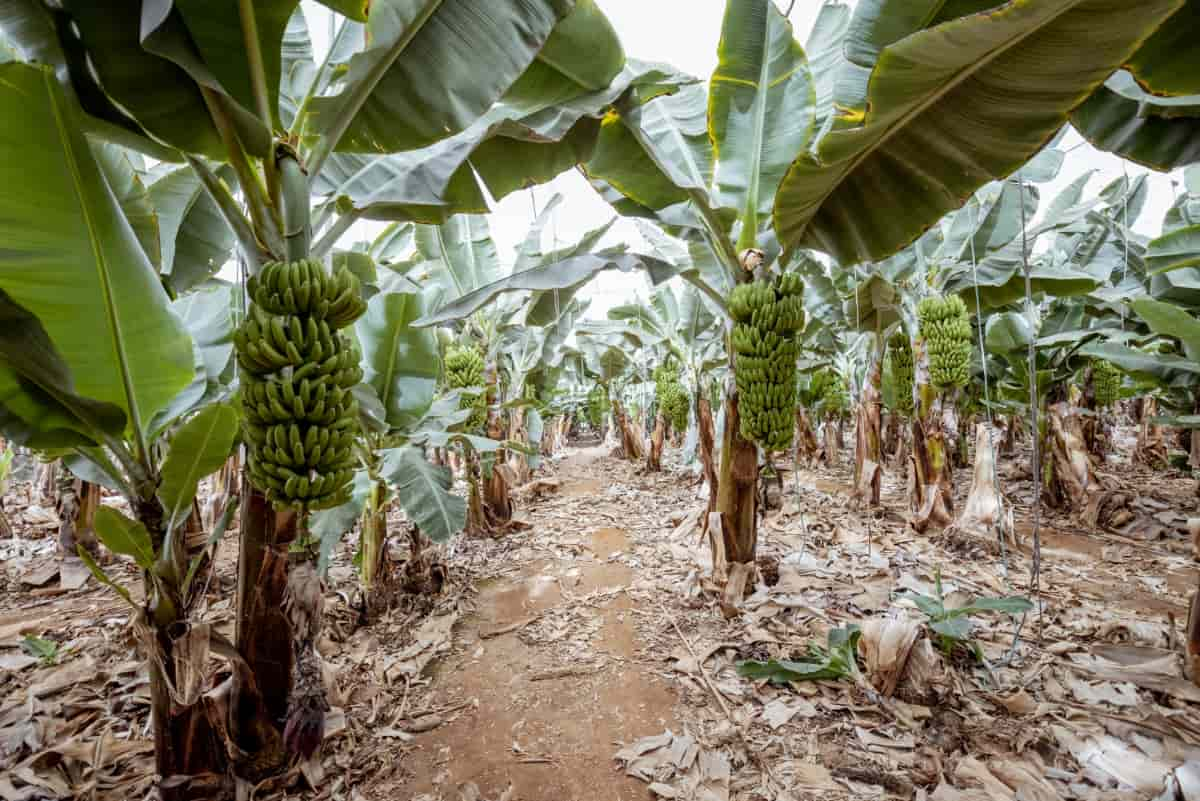The initial investment for drip irrigation in a banana plantation involves various components. On average, the cost per acre can range from INR 1,00,000 to INR 1,50,000, depending on factors such as the size of the plantation, the density of plants, the type of drip system chosen, and the terrain. This includes the cost of essential equipment like pipes, tubing, connectors, and control valves.

Farmers can explore government subsidies and schemes that aim to promote efficient water use in agriculture, potentially reducing the financial burden. These subsidies may cover a percentage of the installation costs, making drip irrigation a more economically viable option for banana cultivation.
Cost of Drip Irrigation Per Acre for Banana Plantation
Evaluate the Cost of Drip Lines and Emitters for Banana Fields
Drip lines and emitters are crucial components of a drip irrigation system for banana fields, contributing significantly to the overall cost. The cost per acre for these components typically ranges from INR 20,000 to INR 40,000. Drip lines, responsible for delivering water directly to the plant’s root zone, come in various materials and thicknesses, affecting the overall cost.
High-quality emitters ensure precise water distribution and are available at different flow rates, influencing the cost per unit. Farmers need to assess the specific requirements of their banana plantation, considering factors such as plant spacing and water needs, to determine the optimal combination of drip lines and emitters.
Analyze the Expense of Filters and Pressure Regulators in Drip Irrigation Systems
Filters and pressure regulators play a crucial role in maintaining the efficiency and longevity of drip irrigation systems in banana fields, contributing to the overall expense. The cost for these components is approximately INR 10,000 to INR 20,000 per acre. Filters prevent clogging of emitters by removing impurities from the water, ensuring a consistent flow. Pressure regulators, on the other hand, maintain optimal pressure levels throughout the system, preventing damage to delicate emitters.
Estimate the Cost of Automation and Control Systems in Drip Irrigation for Banana
Integrating automation and control systems into drip irrigation for banana farming involves an estimated cost of INR 30,000 to INR 50,000 per acre. These systems enable precise control over irrigation schedules, ensuring optimal water delivery to banana plants. The expense includes sensors, controllers, and software for monitoring and adjusting factors like soil moisture, temperature, and weather conditions. While the investment is higher, the benefits of water efficiency and yield optimization in the future make automation a valuable consideration for banana plantations.
Assess the Price of Pumps and Pumping Stations for Drip Irrigation in Banana Farming
The cost of pumps and pumping stations for drip irrigation in banana farming varies based on factors like water source, distance, and elevation. On average, the estimated cost ranges from INR 30,000 to INR 40,000 per acre. This includes the price of the pump unit, installation expenses, and necessary infrastructure.
In case you missed it: Best Intercrops for Banana Plantations: Exploring Benefits of Intercropping in Banana Orchards

Energy-efficient pump options can help farmers reduce operational costs over time. Additionally, exploring government subsidies and incentives for adopting sustainable irrigation practices may alleviate some of the financial burden associated with pump investments.
Explore the Cost of Fertilizer and Nutrient Injection Systems in Drip Irrigation for Banana
Incorporating fertilizer and nutrient injection systems into drip irrigation for banana cultivation involves an estimated cost of INR 15,000 to INR 25,000 per acre. These systems enable precise delivery of fertilizers directly to the plant root zone, enhancing nutrient efficiency. The expense includes injectors, tanks, and monitoring devices.
While initially adding to the investment, these systems contribute to improved nutrient management and increased yield. Farmers should assess the specific nutrient requirements of banana plants and consider the long-term benefits when evaluating the cost-effectiveness of fertilizer and nutrient injection systems in drip irrigation.
Calculate the Labor and Installation Costs for Drip Irrigation in Banana Plantations
Labor and installation costs for drip irrigation in banana plantations typically range from INR 15,000 to INR 20,000 per acre. This estimate includes expenses related to site preparation, trenching, laying pipes, installing drip lines and emitters, and setting up filters and pressure regulators.
The complexity of the terrain, the size of the plantation, and the type of drip system chosen influence these costs. Skilled labor is essential for proper installation, ensuring the efficient working of the drip irrigation system. Farmers may also factor in local wage rates and negotiate installation costs to manage expenses effectively.
Factor the Maintenance and Repair Expenses for Drip Irrigation Systems in Banana Farming
Maintenance and repair costs for drip irrigation systems in banana farming typically range from INR 8,000 to INR 15,000 per acre annually. This estimate covers expenses for inspecting and replacing worn-out components, ensuring proper system functionality. Regular maintenance is crucial to prevent clogging, leaks, or malfunctions in emitters, filters, and other components.
In case you missed it: Integrated Pest Management in Banana Plantations: IPM Strategies in Banana Farms

Timely repairs ensure the longevity and efficiency of the system, minimizing downtime and optimizing water use in banana plantations. Farmers should budget for these ongoing expenses to sustain the benefits of drip irrigation over the long term.
Energy Costs Associated with Drip Irrigation in Banana Cultivation
Energy costs associated with drip irrigation in banana cultivation depend on factors like pump efficiency, water source distance, and the duration of irrigation. On average, the annual energy costs range from INR 5,000 to INR 10,000 per acre. Energy-efficient pumps and well-designed systems can contribute to cost savings.
Solar-powered options are increasingly viable, offering sustainable alternatives to traditional electricity sources. Implementing smart irrigation practices, guided by automation and efficient scheduling, can further optimize energy use. Farmers should conduct energy audits and explore renewable energy solutions to mitigate operational expenses and enhance the economic viability of drip irrigation in banana cultivation.
Government Subsidy for Banana Drip Irrigation
Various agricultural development schemes and programs offer subsidies to promote efficient irrigation systems. Depending on the region and specific schemes, farmers may receive subsidies covering a percentage of the installation costs, making drip irrigation more affordable. Subsidies may also extend to components like pumps, automation systems, and energy-efficient equipment, further reducing the overall financial burden.
The Indian government is presently offering financial aid and subsidies at a rate of 55% of the suggested unit cost to Small and marginal farmers and 45% to Other farmers. This aims to promote the adoption of drip irrigation systems under the “PDMC” scheme, thereby expanding irrigation coverage.
Compare the Overall Operational Costs of Drip Irrigation vs. Traditional Methods in Banana Farming
The overall operational costs of drip irrigation in banana farming are often more favorable when compared to traditional irrigation methods. Drip irrigation allows precise water delivery to the plant root zone, minimizing water wastage and optimizing resource use. While the initial investment in drip systems is higher, the long-term benefits generally outweigh the costs. Reduced water consumption, increased yield, and improved nutrient efficiency contribute to overall cost-effectiveness.
In case you missed it: Common Mistakes to Avoid in Banana Farming: A Guide for First-Time Banana Farmers

In contrast, traditional methods like flood or furrow irrigation tend to be less efficient, leading to higher water and fertilizer usage. The labor-intensive nature of traditional systems can also contribute to increased operational costs over time. Drip irrigation’s ability to automate and control water delivery, coupled with potential government subsidies, makes it an economically attractive option for banana farming, promoting sustainability and resource efficiency in agriculture.
Conclusion
In conclusion, the cost of drip irrigation per acre for banana plantations involves initial investments in equipment and labor. While the setup expenses are relatively higher, potential government subsidies can significantly offset these costs, making drip irrigation an economically viable and sustainable choice. The long-term benefits, including water efficiency and increased yield, further emphasize the financial advantages of adopting drip irrigation practices in banana farming.
- Feed Your Flock for Less: Top 10 Tips to Save on Chicken Feed
- Ultimate Guide to Ossabaw Island Hog: Breeding, Raising, Diet, and Care
- Hatching Answers: The Top 10 Reasons Your Chickens Aren’t Laying Eggs
- Eggs and Economics: Breaking Down the Cost of Raising Backyard Chickens
- Defend Your Greens: Proven Methods to Keep Iguanas Out of Your Garden
- Ultimate Guide to Cinnamon Queen Chicken: A Comprehensive Guide for Beginners
- Ultimate Guide to California Tan Chicken: Breeding, Raising, Diet, Egg-Production and Care
- Ultimate Guide to Marsh Daisy Chicken: Breeding, Raising, Diet, and Care
- 10 Types of Chicken Farming Businesses You Can Start for Profits